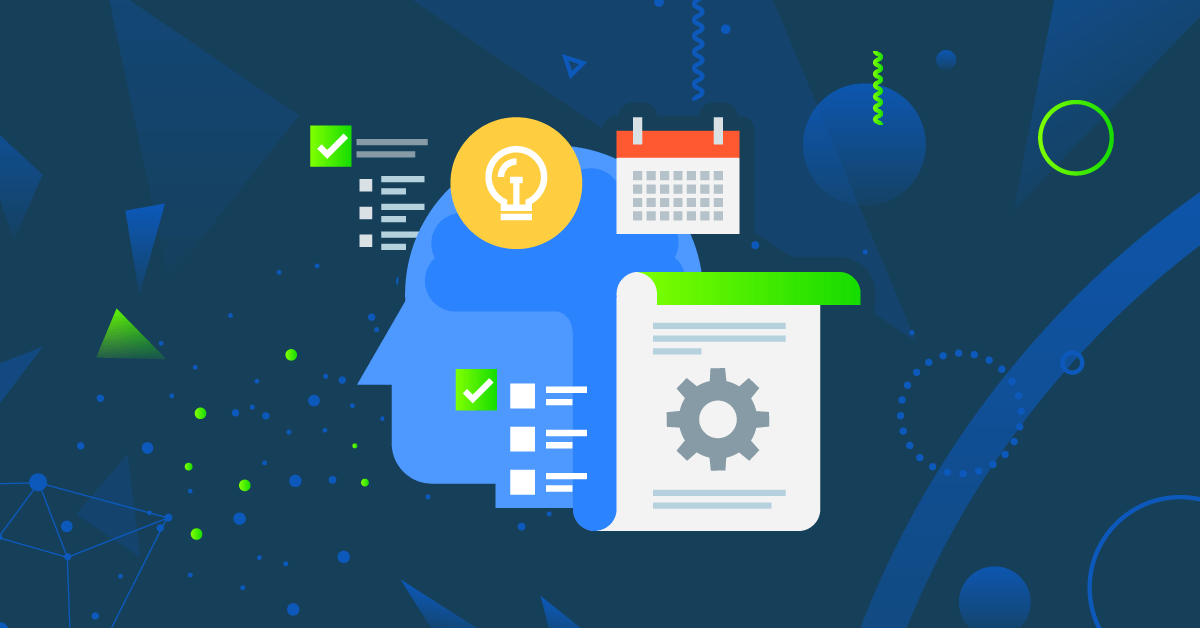It’s unlikely that corporate training is top of mind for your employees. It should, however, be top of mind for your leadership. Without strong corporate training programs, reaching the goals you set for your business is nearly impossible.
The focus needs to stay on your greatest asset, your people. Keeping the best of the best thriving in their roles and developing their skills over time keeps them engaged with your company. It all comes down to fostering and retaining top talent.
According to a LinkedIn study, 94% of employees said they would stay with a company longer if it actively supported their career development. Having a strong corporate training program answers this call.
Understanding corporate training
A recent report found that 48% of managers responsible for onboarding new hires report that new hires lack the necessary skills for their jobs. The current labor shortage is only increasing this gap.
It’s become critical to get new employees up to speed fast.
This is where corporate training comes in.
What is corporate training?
Corporate training is a strategic process that gives employees the knowledge and skills needed to excel in their current roles while adapting to future challenges. It includes a range of activities like online courses, workshops, and hands-on training to enhance capabilities and competencies.
Corporate training done well should drive your teams to reach specific goals in your company, such as hitting KPIs, innovating and improving products and services, as well as remaining in line with regulatory compliance.
A strong corporate training program aligns business objectives with employee capabilities. Ultimately, you want your corporate training to cultivate a strong workforce that meets business demands.
Why corporate training matters
No matter what industry your business is in, the competitive landscape is evolving. If your business isn’t proactive, it can be easy to fall behind.
One of the best ways to keep up is by investing in corporate learning. When done right, you position yourself to:
- Improve employee performance
- Increase employee retention
- Enhance company culture
- Drive business growth
What is corporate training and development?
Corporate training and development closes immediate skill gaps, while strategically investing in the long-term growth of employees. Training focuses on providing employees with the essential skills they need to do their job effectively. Development takes a broader view, focusing on long-term professional growth and career advancement. Together, they build a capable workforce that drives individual and organizational success.
The difference between training and development
- Training is usually short-term, with a focus on immediate needs. The goal is to enhance specific skills related to a person’s current role.
- Development will typically build diverse skills, with the intent of preparing employees for future roles. The goal is to achieve overall growth and career progression for your staff.
How do training and development complement each other?
Training and development are complementary processes. The timing needs to be right to be effective.
Training helps your staff become competent in what they do. But it can’t just be a one-time event for new hires. It continues over time when learning a new skill, or reviewing information.
Development is the preparation for new opportunities and challenges.
Having a balance of both training and development is beneficial all around.
For the organization:
- Better employee engagement
- Reduced turnover rates
- Enhanced productivity
- Improved innovation
For employees:
- Personal growth
- Increased job satisfaction
- Career advancement opportunities
Types of corporate training programs
Corporate training comes in many forms. Each serves a unique purpose, so knowing when to put them in play matters.
Below are some of the more common corporate training programs.
- Onboarding programs
Onboarding is the first formal training a new employee receives. It sets the tone for what they can expect moving forward. Things like company culture, roles, and specific job responsibilities are covered.
- Technical skills training
The focus is on specific technical competencies required for job performance, such as software proficiency, or engineering skills.
- Soft skills training
Soft skills fall both into training and development, as they’re something your teams likely need in their current role, and certainly as they advance. Interpersonal skills like communication, teamwork, problem-solving, and emotional intelligence are the focus.
- Compliance training
If you don’t prioritize compliance training, you run the risk of safety and legal issues. Keep everyone up to date on compliance training to protect them and the business. Common topics are data protection and workplace safety.
- Leadership development
Setting yourself up to be able to promote from within offers huge benefits to your company. To prepare employees for leadership roles, they need to develop their skills in areas including management, decision-making, and strategic thinking.
- Diversity, equity, and inclusion (DEI) training
Educating employees on DEI practices can improve your company’s culture. A respectful and collaborative work environment can lead to higher employee engagement.
How to create a successful corporate training program
Understanding the importance of corporate learning and development is an important first step. The next is actually creating an effective program. While this may sound like a daunting process, it doesn’t have to be.
Here are some essential steps to develop your successful corporate training program.
Assess training needs
Start by identifying the skills and knowledge your employees need. Talk to your managers, review performance data, and conduct surveys. This helps you figure out what your employees need to learn.
Conduct a skills gap analysis
Next, perform a skills gap analysis. Simply put, you’re comparing current skills with what’s needed. Understanding these gaps will guide your training focus.
Set training objectives and goals
After identifying gaps in learning, you need to set learning objectives. They should address the gaps while aligning with company goals.
Make sure these goals are SMART: Specific, Measurable, Achievable, Relevant, and Time-bound.
For example, if you need employees to learn a new software, your goal might be to have 90% proficiency within three months.
Design the training program
- Focus on employee needs: Consider different learning styles. Some employees may prefer videos, while others learn better through hands-on activities. Also, think about remote employees and how they can access the training.
- Business needs: Ensure your program is within budget and fits your company’s schedule. For example, if you have a busy season, plan training during a slower period.
- Scalability: The more your organization grows, so will the need for a scalable training solution. That’s where a learning management system (LMS) comes in. An LMS lets you expand your training program while keeping it consistent and standardized. The outcome is a training experience you can count on for a dispersed workforce.
Implement the training
- Schedule training sessions
- Prepare materials
- Make sure your trainers are prepared
- Communicate with your employees the benefits and importance of the training
Evaluate and improve
Finally, evaluate the training’s effectiveness. An often overlooked step is collecting feedback. Find out from the trainers, trainees, and management what worked well and what needs improvement.
Don’t collect feedback and then let it collect dust. Failure to take action on feedback threatens to lead to employee disengagement. Make improvements to the training based on feedback. You want to keep the training relevant and effective.
Corporate learning and development strategies
With the steps to create a corporate learning program, you now need a strategy for implementing it.
Let’s explore some key strategies:
In-person training
In-person training, or traditional or instructor-led training, allows employees and instructors to interact directly. This allows everyone to receive immediate feedback.
Training in person allows your staff to participate in collaborative learning. They can ask questions on the spot and participate in group discussions. In-person training naturally enhances understanding.
Online and mobile training
Corporate online training offers flexibility and convenience that in-person training can’t. If you have remote workers, time and location restraints make coordination hard. Online and mobile training provides location and time flexibility.
Online training includes activities like webinars, e-learning modules, and virtual classrooms.
Mobile training takes this a step further by allowing employees to learn on a mobile device.
Blended learning
Blended learning combines the best of both in-person and online training. This hybrid approach allows your employees to have the benefits of face-to-face learning while enjoying the flexibility of online learning.
Blended learning might look like this.
Your staff might complete an online module at their own pace. An in-person workshop is then held to apply what they’ve learned.
Blended learning also allows for the accommodation of different learning styles. The learning becomes more successful when it reaches more people.
Interactive training
When people are actively engaged, their learning outcomes improve. Interactive training is perfect for increasing engagement. Simulations, role-playing, and gamification are interactive elements that make learning memorable.
One example is when a sales team does role-playing to practice handling customer objections.
On-the-job training
On-the-job training has employees learning by doing. Your staff gets real-world experience while immediately applying their new skills. This method works because it directly relates to the person’s daily responsibilities.
What could this look like?
A new employee shadows a more experienced worker to learn the ropes. Or, an existing employee might take on new responsibilities under the guidance of a mentor.
Common challenges faced in corporate training
You can build your corporate training strategy from the ground up, following all of the best advice out there, and still face challenges.
Here are some common problems that come up with corporate training and ways to solve them.
Employee engagement
Maintaining employee engagement during training can be hard. If it’s not relevant and engaging, they will lose interest. The result is poor retention of information and skills.
Solution: Keep training sessions relevant to the roles of the participants. Use a variety of formats like videos, simulations, and group activities. Prioritizing interactive elements keeps the training engaging.
Outdated training methods
It’s very easy to set up an effective corporate training program and then neglect to update it. Outdated training materials have a negative effect on learning. Your training needs to evolve with your business.
Solution: Regularly review and update your training materials. Incorporate proven training techniques, like mobile learning.
Measuring training effectiveness
It can be hard to figure out if training is effective. If you lack clear metrics, it’s hard to know if the training is helping its participants.
Solution: Use an LMS to streamline the process of measuring training effectiveness. Before starting, be sure to establish clear objectives and key performance indicators. Use post-training surveys, assessments, and performance data to measure effectiveness. Continue to make data-driven improvements over time.
Budget constraints
Training costs can add up quickly. Many companies find it hard to justify the cost of high-quality corporate training resources.
Solution: Use training programs that have the highest return on investment. Cost-effective training methods like online courses and internal trainers will maximize your resources, without compromising quality. An LMS allows you to consolidate resources and saves time on administrative tasks.
Technology integration
When you lack the necessary infrastructure, adopting new digital learning platforms can be hard.
Solution: Conduct a thorough needs analysis before choosing a new technology. An LMS is typically designed to integrate into existing systems. Choose one that is scalable so the integration is smooth. Remember to set up your staff for success by providing training and technical support.
Gaps in training content
A generic training program can create a gap between employees’ learning needs and the actual content taught. This misalignment doesn’t address specific job-related skills.
Solution: Personalize training to address specific job roles and skill requirements. Conduct regular skill gap analyses to ensure training content aligns with the needs of the employee and the organization.
Instructor availability
Qualified instructors who can deliver specialized training aren’t easy to find. High-demand instructors may have limited availability, complicating the scheduling of training sessions.
Solution: Develop a pool of internal trainers by providing train-the-trainer programs. Plan training schedules well in advance to secure top instructors when needed.
Another solution is using an LMS. It can help mitigate this challenge by offering digital training tools like recorded webinars and e-learning modules to supplement live instruction. With it, high-quality training is available anytime.

Benefits of corporate learning
There’s no doubt that providing high-quality corporate training offers many benefits. When done right, both your organization and staff will thrive.
Improved employee performance
Continuous learning keeps everyone current with industry trends while enhancing skills and productivity. When your staff is well trained, you can expect higher quality of work and performance.
Enhanced company culture
If you want to improve your company culture, you must prioritize learning. Continuous improvement, collaboration, and growth are just some of the benefits. When your employees know you’re investing in them, they tend to be more motivated.
Higher employee retention rates
Employees with access to ongoing learning generally feel supported. They’re more likely to stick around when they know there are opportunities for growth.
Increased innovation and adaptability
Some corporate learning encourages employees to think creatively. Bringing on new ideas and technologies is valued. A well-trained workforce can adapt quickly to change. This can help your organization stay responsive to a fast-evolving business world.
AI in corporate training
Imagine a world where your training adapts to your needs, not the other way around. Artificial intelligence is making it a reality. The key components are making training more personalized and highly efficient.
Integrating AI in corporate training
One-size-fits-all training modules are a thing of the past. AI is revolutionizing the way organizations deliver training.
By automating tedious tasks, analyzing important data, and providing personalized experiences, AI brings new efficiency to learning and development. It’s like having a tireless training assistant who knows just what your team needs.
AI and course creation
Picture this: AI as your content co-creator. You bring the human element by understanding your people, their needs, and your organization’s goals. AI handles the heavy lifting when it comes to creation.
It can streamline the course creation process by analyzing existing training materials, identifying gaps, and generating new content. The result is training materials that are always on point.
Personalization and adaptive learning
Here is where AI really flexes its muscles. It has the ability to understand the unique needs of each employee. An adaptive learning approach ensures that everyone receives personalized training. AI can adjust the difficulty level of training materials based on an employee’s performance. This means it provides additional support where needed and advanced challenges for those who excel.
Integrating AI into corporate training gives you more than a tool—you have a competitive edge. You can create more efficient, personalized, and effective learning experiences to drive results.
FAQs
- What is corporate learning, and why is it important?
Corporate learning refers to structured programs to improve employees’ skills and knowledge.
It’s essential because:
- It contributes to overall business success by enhancing productivity and innovation
- It helps employees perform their tasks more effectively
- It keeps everyone updated with industry trends
- How do you measure the effectiveness of corporate training programs?
Measuring the effectiveness of corporate training programs involves setting clear objectives and using key performance indicators (KPIs). Some KPIs are employee performance metrics, feedback surveys, assessments, and retention rates.
Regularly analyzing these metrics helps determine if your corporate training programs are effective.
- How can AI enhance corporate training?
AI can help take some of the guesswork and heavy lifting out of course creation. It can create a personalized learning experience for your staff by analyzing employee data.
Course creation becomes automated while providing adaptive learning paths. Chatbots deliver instant support, predict future training needs, and make the learning process more efficient and effective.
- How can organizations ensure employee engagement during training sessions?
Keeping training sessions interactive and relevant to your staff helps keep them engaged. A mix of multimedia content, hands-on activities, and real-life examples can make training more interesting. Aligning training content with job roles can increase perceived value.
Turn corporate training into a competitive advantage
As we stand at the intersection of technology and human potential, the future of corporate training has never been more exciting, or consequential. Corporate learning needs to be viewed beyond a box to check. It needs to be a priority to gain the advantages a good training program offers.
Key takeaways
- A strong corporate training program improves employee retention rates.
- Continuous learning enhances the culture and innovation of a business.
- Blended learning should be used to create a well-rounded training environment.
- AI personalizes learning and streamlines course creation.



